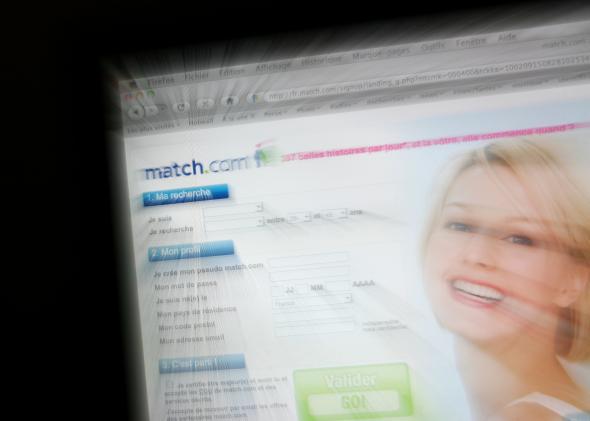We are living in a time of great transition for digital romance. A new study from the Pew Research Center’s Internet and American Life Project, released Monday, found that 59 percent of American Internet users believe that “online dating is a good way to meet people,” a 14-point jump since 2005. Among Americans who identify themselves as “single and looking,” 38 percent say they’ve used a dating site or app to try to meet a match. But 21 percent of plugged-in Americans still think that “people who use online dating sites are desperate.” (In 2005, 29 percent of them said so.) Even 13 percent of people who date online consider themselves desperate. Though online dating has become normalized, it’s still seen as a little sad.
I’d submit that the framework of popular dating sites like Match.com and OkCupid only contribute to that notion. These sites still situate online dating as a meat market for semi-anonymous singles that’s disconnected from the rest of our online (and offline) identities. Our online dating profiles are typically not linked to our other public profiles, like Facebook and Twitter. And the sites’ matching strategies—which connect users based on questions they’ve answered about themselves—rely on a primitive idea of the interplay between digital technologies and human relationships. They assume that we can just plug our metadata into a computer, run it through an algorithm, scroll through a list of prospects sorted by the mathematical possibility that we’ll get along, and find someone. That’s just not how human relationships work—not on the Internet and not off. That’s particularly true for the 54 percent of online daters who have encountered a match they felt “seriously misrepresented themselves in their profile.”
We all know that the Internet can be a powerful tool for connecting people, so why do these sites still carry some stigma? Perhaps because the best connections, online and off, are made more holistically in the context of our everyday lives. This explains the success of Tinder, the hookup app that enables daters to assess photographs of other singletons in their general area, then right-swipe with their index finger when they like what they see. Tinder requires users to login through Facebook, which unfortunately only increases Mark Zuckerberg’s creeping command over all online spaces. But it fortunately means that the dudes and ladies you’re meeting through the app are representing themselves roughly similarly to how they’re doing so on more public forms of social media. (Perhaps Zuckerberg was onto something with Facematch, the proto-Facebook that allowed Harvard students to check out potential hookups living in neighboring houses.) It helps that, in order to message someone on Tinder, you both have to “choose” each other, so you’re not inundated with missives from the creepiest users. (Pew also found that 42 percent of female online daters and 17 percent of male ones have experienced “uncomfortable or bothersome contact” on Internet dating sites.)
Tinder also lowers the barrier between checking someone out online and actually meeting him or her in real life; it’s only showing you geographically optimal options, and its interface prioritizes short, flirty texts, not romantic dissertations, which can help preserve excitement and temper unreasonable expectations. While some of the matching questions on places like OkCupid can tell you important things about a potential partner—does this person think abortion should be legal or believe that gay marriage should not? —they can’t predict whether users will actually have chemistry with each other, which is maybe not the most important aspect of a lasting connection but is certainly a requirement to get things started. The brevity of the Tinder exchange also means that using the app is easier to integrate into our daily lives than the drawn-out profile curation typical of a place like Match.
Still, Tinder feels like a stopgap solution wedged between the online dating ghettos and the full integration of the Internet into our romantic lives. Pew also found that the proportion of online Americans who use any Internet platform to flirt is increasing dramatically—24 percent of today’s Internet users have flirted with someone online; in 2005, just 15 percent had done so. As online dating becomes more normal, and less desperate, we will feel less incentivized to segregate our online romantic dealings from our digital business connections and social spaces. That will mean that people will meet online closer to the way that we have always fallen for co-workers or friends of friends in person. No algorithm required.
